Menus
- Current female athletes in comparison
- Suspension settings and driving modes
- Sharpest tool in the box
- The distance
- The driver
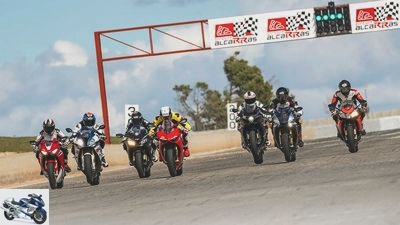
r-photography.info, factstudio.de
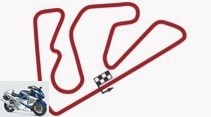
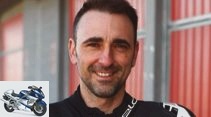
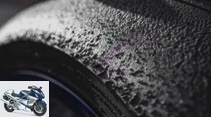
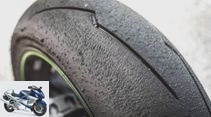
14th photos

r-photography.info, factstudio.de
1/14
Aprilia RSV4 RF, BMW S 1000 RR, Ducati Panigale V4 S, Honda CBR 1000 RR Fireblade SP, Kawasaki Ninja ZX-10RR, Suzuki GSX-R 1000 R and Yamaha YZF-R1M in the racetrack comparison test.
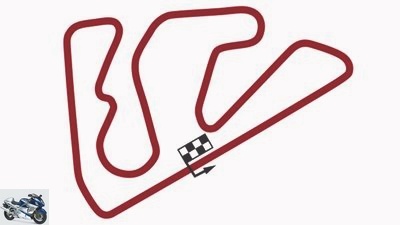
r-photography.info, factstudio.de
2/14
Circuit de Alcarràs: 3743 meters, 10 left and 4 right turns, start-finish straight 800 meters. Grippy asphalt, wavy braking zones.
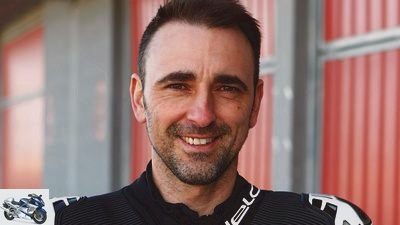
r-photography.info, factstudio.de
3/14
The driver – Christian Kellner: 125cc DM, Supersport DM, Supersport World Championship, IDM Superbike, IDM Supersport.
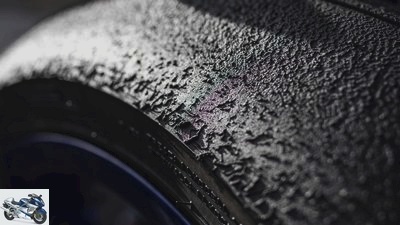
r-photography.info, factstudio.de
4/14
Pirelli Superbike Slick, SC1.
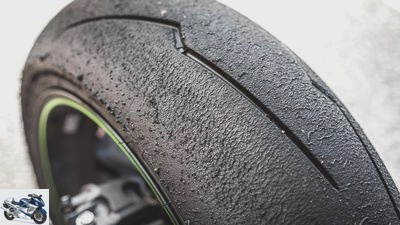
r-photography.info, factstudio.de
5/14
Pirelli Supercorsa SP: The tire for the test.
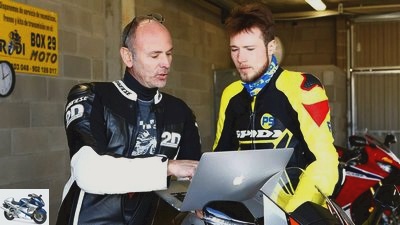
r-photography.info, factstudio.de
6/14
Dirk Debus and Tobias Munchinger (PS) evaluating the data recording.
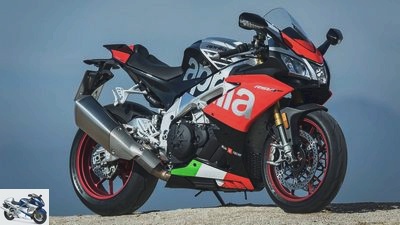
r-photography.info, factstudio.de
7/14
Aprilia RSV4 RF: V4 engine, conventional Ohlins chassis, forged wheels.
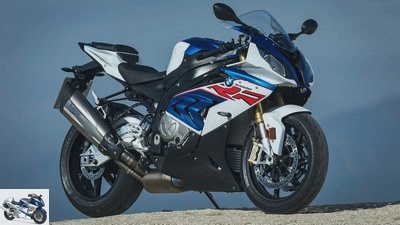
r-photography.info, factstudio.de
8/14
BMW S 1000 RR: rocker arm motor, equipment on par with the competition.
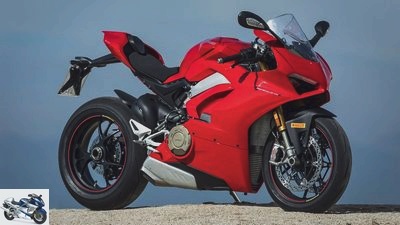
r-photography.info, factstudio.de
9/14
Ducati V4 S: 1103 cubic Desmo V4, semi-active chassis, forged wheels.
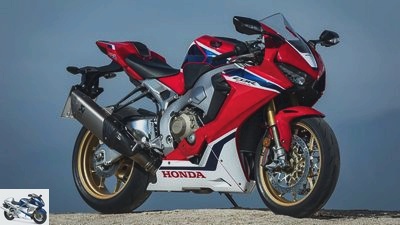
r-photography.info, factstudio.de
10/14
Honda Fireblade SP: semi-active Ohlins chassis, classic inline four-cylinder.
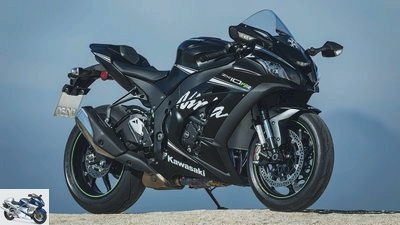
r-photography.info, factstudio.de
11/14
Kawasaki ZX-10 RR: forged wheels, Showa “Balance-Free” chassis.

r-photography.info, factstudio.de
12/14
Suzuki GSX-R 1000 R: VVT, rocker arm (like base), Showa BFF and BFRC.
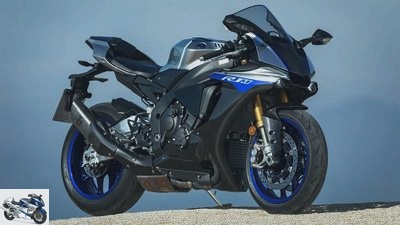
r-photography.info, factstudio.de
13/14
Yamaha YZF-R1M: semi-active Ohlins chassis, crossplane four-cylinder.
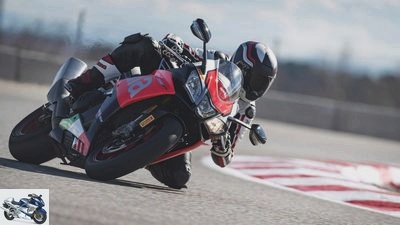
r-photography.info, factstudio.de
14/14
And the winner is: Aprilia RSV4 RF. Brilliant chassis, highest precision, great electronics.
7 superbikes in the racetrack test
Current female athletes in comparison
On the racetrack, the focus is shifting and the cards are being reshuffled – this also applies to street bikes. Passenger comfort, payload, consumption? Irrelevant. Only tough driving criteria count here. And lap times.
The data recording for the Panigale V4 S at the end of the 800-meter-long straight of the Circuit Alcarras shows a real 257 kilometers per hour – the top rate of the group. The Ninja ZX-10 RR drives 245 km / h at the same braking point. These are worlds. In other respects, too, the Ducati, with its outstanding engine, is always the fastest bike after brief acceleration phases. Nevertheless, racing driver Christian Kellner only achieved the fourth fastest lap time, behind BMW, Yamaha and Aprilia.
Buy complete article
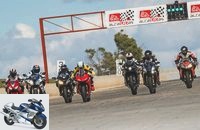
7 superbikes in the racetrack test
Current female athletes in comparison
Aprilia and especially BMW. The latter in particular not only provides an incredible amount of power over a wide range, but also makes it easy for cracks to access them as early and as long as possible with the smooth use of power and perfect controllability. This is quick and also saves the stamina of the pilot.
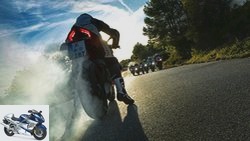
Super athlete
7 superbikes in the country road test
The new V4 S against the rest
read more
Suspension settings and driving modes
When analyzing the data recording, it became apparent that the Panigale V4 S was losing something in the slow sections of the route – an indication of its not entirely impeccable stability. Or, more precisely, to the unconventionally designed chassis that reacts to the stirring movement in a rather “pointed” manner. While an S 1000 RR, GSX-R 1000 R and Ninja ZX-10 RR pump “softly”, in which case you can stay on the gas carefree, the Panigale doesn’t quite convey this feeling of serenity. Due to this peculiarity, the very sensitive, transparent electronic chassis of the Ducati, which is blessed with a wide adjustment range, has a lot of work to do. While the basic construction of the R1M and Fireblade, which are more stable in their basic construction, but nevertheless extremely handy, could be moved in the (sharpened) automatic driving modes, Christian Kellner preferred the “fixed” mode for the Panigale, which leaves the damping settings static. More than with any other machine, one would want extensive set-up turns with the Panigale V4 S – its potential is apparently slumbering deeper.
That’s enough of the criticism of the Ducati, after all, in return, it also has enormous qualities. First of all, after the beastly motor, there is its excellent electronics package and its gigantic brake. The former is not only generous (lean angle-dependent traction control and cornering ABS as well as wheelie control are self-evident, otherwise only the Yamaha offers slide control), but also works at the highest level. In view of the outstanding deceleration performance of the new Brembo “Stylema” anchors (long wheelbase, high braking stability), the anti-lock device, which never intervened unpleasantly, shone. A feat that BMW and Aprilia also accomplish, but which the Japanese, especially Honda, fail. The ABS, which cannot be switched off, is clearly the weakest individual component of the otherwise impressive, at the same time quite easy to drive Honda. Occasionally, the system opened the pressure when braking hard on partly undulating ground. That robs trust at the moment, throws the Fireblade SP back significantly, as does its somewhat coarse traction control.
Sharpest tool in the box
Kawa (ABS can be switched off as an option, as with BMW) and, more rarely, Suzuki, while the R1M only allows a certain brake pressure from the outset, at which the deceleration is still correct, are similar, albeit in a significantly softened form. But this is reflected in a wooden, dull feeling for the brake. Not serious, but a shame. Because in terms of steering behavior and stability, the R1M is also at the top of the field. The RSV4 and S 1000 RR are strong on the brakes, although the latter reveals the well-known phenomenon of increasing free travel in the brake lever after a few turns – but also still the best traction control in the field. The S 1000 RR is indeed not the crispest motorcycle (although the forged wheels, which are subject to a surcharge, significantly increase handiness), but primarily thanks to its engine, the excellent electronics package and the good-naturedness of the chassis, it is the one that both professionals ride Waiters as well as most hobby drivers reliably manage the fastest laps.
But the sharpest tool in the box comes from Noale. It is almost unbelievable what a package Aprilia puts on the forged wheels with the RSV4 RF. Switching even from the good semi-active chassis to the conventional Ohlins chassis of the RF (front NIX fork, rear TTX strut) is like switching to 4K television. Only here is the last but crucial bit of information about the liability situation. The uncompromising ergonomics also work on the racetrack, contributing to the intimate communication between driver and machine. Like no other motorcycle, the RSV4 RF combines stability, handling and feedback. It has a strong position in electronics and has a linear drive that can be metered extremely accurately. With this unconditional precision, the RSV4 also punishes negligence more directly – which makes a curve that is neatly arrowed through with it all the more the highest of emotions.
The distance
r-photography.info, factstudio.de
Circuit de Alcarràs: 3,743 meters, 10 left and 4 right turns, start-finish straight 800 meters. Grippy asphalt, wavy braking zones.
This year the comparison will take place on the demanding route in Alcarràs, Spain. It has a very high level of grip, but mercilessly reveals weaknesses in the chassis and electronics with partly wavy braking zones, some tight turns and a tricky chicane.
The driver
r-photography.info, factstudio.de
Christian Kellner: 125cc DM, Supersport DM, Supersport World Championship, IDM Superbike, IDM Supersport.
To determine the lap times and driving impressions at the limit, we get quick reinforcements in the form of Christian Kellner, Ex-Supersport World Cup, IDM Supersport and IDM Superbike riders.
Related articles
-
Seven superbikes in the comparison test – country road
r-photography.info 37 photos r-photography.info 1/37 Aprilia RSV4 RF, BMW S 1000 RR, Ducati Panigale V4 S, Honda CBR 1000 RR Fireblade SP, Kawasaki Ninja…
-
Seven superbikes in the racetrack test
r-photography.info 46 photos r-photography.info 1/46 Aprilia RSV4 RF, BMW S 1000 RR, Ducati 1299 Panigale S, Honda Fireblade SP, Kawasaki ZX-10RR, Suzuki…
-
Comparison test of superbikes part 2 – racetrack
51 pictures 1/51 The Kawa brake was transformed. She looked dull and lacked exact feedback. …
-
Supersport motorcycles in comparison test on the racetrack
Bilski 34 photos Bilski 1/34 Track test super athlete. Bilski 2/34 … The fact that he chose the Suzuki for this high-speed posing speaks for its…
-
Comparison test of V4 superbikes Ducati Panigale V4 S Aprilia RSV4 RF
fact 21 pictures fact 1/21 Ducati Panigale V4 S and Aprilia RSV4 RF in a comparison test. fact 2/21 Otherwise, the V4 RR adopts the concept of normal …
-
Comparison test of superbikes, part 1: Country road
Jorg Kunstle 36 pictures 1/36 Comparison test Superbikes: Aprilia RSV4 RF, BMW S 1000 RR, Kawasaki ZX-10R, Yamaha YZF-R1M. 2/36 …
-
Track test super nakeds against superbikes
65 Pictures www. 1/65 It does not have a spring strut redirection with an eccentric to adjust the rear height like the RC8 R does. That helps …
-
Track test: All series superbikes
Sanz Tracktest: All Series Superbikes Mastersuperbike 2010 Content of The Supersport Knaller of the Year, the largest international …
-
Test of the Superbikes 2012 – The super athletes on the racetrack
Jahn 26 pictures Jahn 1/26 The super athletes: Aprilia RSV4 Factory APRC, BMW S 1000 RR, Ducati 1199 Panigale S, Honda Fireblade, Kawasaki Ninja ZX-10R, KTM …
-
PS Bridgestone Tuner GP 2016 – 1000 Superbikes in comparison test
fact 27 photos markus-jahn.com 1/27 Picture gallery, TunerGP: 1000 Superbikes in comparison. markus-jahn.com 2/27 Bartschat-Kawasaki ZX-10R. Lap time:…